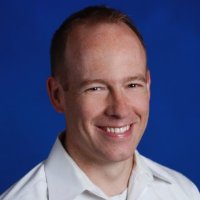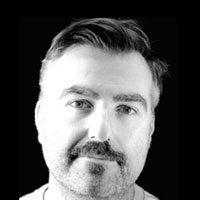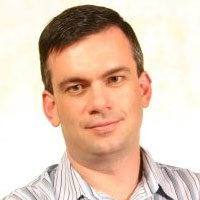This year’s industrial session will feature prominent speakers from the IT industry, including:

Large-Scale Configurable Clouds
Doug Burger, Microsoft
The end of Moore’s Law necessitates specialized processing for improved performance and efficiency. Specialization is challenging for a hyperscale datacenter infrastructure. In this talk, I will describe Microsoft’s approach to specialized datacenter computing, based on incorporating massive quantities of reconfigurable hardware into the cloud.
Doug Burger
Doug Burger holds the title of Distinguished Engineer at Microsoft, where he leads a team focused on transforming both cloud and device architectures. Before moving to Microsoft in 2008, he served on the Computer Science faculty at the University of Texas at Austin for nine years. He is an ACM and IEEE Fellow.
Future IoT Networks and Platforms

Mark Kelly, Intel Labs
The Future Internet of Things will be made up of a myriad of connectivity solutions to address the broad range of applications domains. The continued proliferation of connected devices will bring a broad range of communication and network challenges, among them scale and interoperability. One such group of technologies which is garnering much attention are Low Power Wide Area Networks (LPWANs). LPWANs provide low-rate connectivity to vast numbers of battery powered or energy harvested devices over very large distances that may span tens of kilometres. Existing pilot deployments have demonstrated the potential of LPWAN technologies to address a range of Internet of Things type uses cases, covering licensed and licensed exempt spectrum. LPWANs are not without challenges such as the aforementioned scale and interoperability. Furthermore these networks are often deployed and challenging environments. . Our presentation seeks to outline our research into selected LPWAN technologies, the current challenges and future opportunities.
Mark Kelly
Mark Kelly is the Principal Investigator for IoT in Intel Labs Europe. Mark is the technical lead for the IoT technology research with a particular emphasis on IoT Edge computing platforms and future IoT networks. Mark leads a team of technical researchers creating the next generation IoT technologies and Intellectual Property, delivering new technologies to Intel Business Units. Mark is the Intel Principal Investigator for the recently announced Science Foundation Ireland research centre “CONNECT” – Ireland’s research centre for “Future Networks and Communications”. Mark holds a MSc in Computer Science from UCD, where he is currently completing his Phd in IoT systems. Mark is a senior member of the IEEE.
Rethinking the big data stack: hardware / software co-design for large-scale analytics

Eric Sedlar, Oracle Labs
Read-mostly data parallelism on large data sets (“big data”) is the most compelling reason to invest in more powerful computing technologies, and the rationale behind Project RAPID, our database machine project at Oracle Labs. The most efficient hardware for data parallelism at large scale looks very different from conventional processors in public cloud-style networks. I’ll talk a bit about the design principles we have found to be most useful to build big data systems from software through silicon, and the best ways to evaluate such systems.
Eric Sedlar
Eric Sedlar is Vice President & Technical Director of Oracle Labs (formerly Sun Labs). This position entails figuring out how to transfer research results from Labs research into Oracle products & services, as well as setting overall technical direction for new research projects in Oracle Labs. Eric manages over 160 fulltime researchers working on over a dozen separate research areas.Eric’s own research interests are in domain-specific languages and acceleration of database operations both via new hardware and using JIT compilation.Previously, he led the effort for XML-native storage inside Oracle, starting with Oracle 9iR2. Eric has held various architecture and development management positions at Oracle since starting there in 1990. He holds over 68 patents, and has served on standards organizations for Oracle in the W3C and IETF. He co-authored the Best Paper at SIGMOD 2010 on architecture-sensitive search trees.
More information to follow soon on industrial speakers.